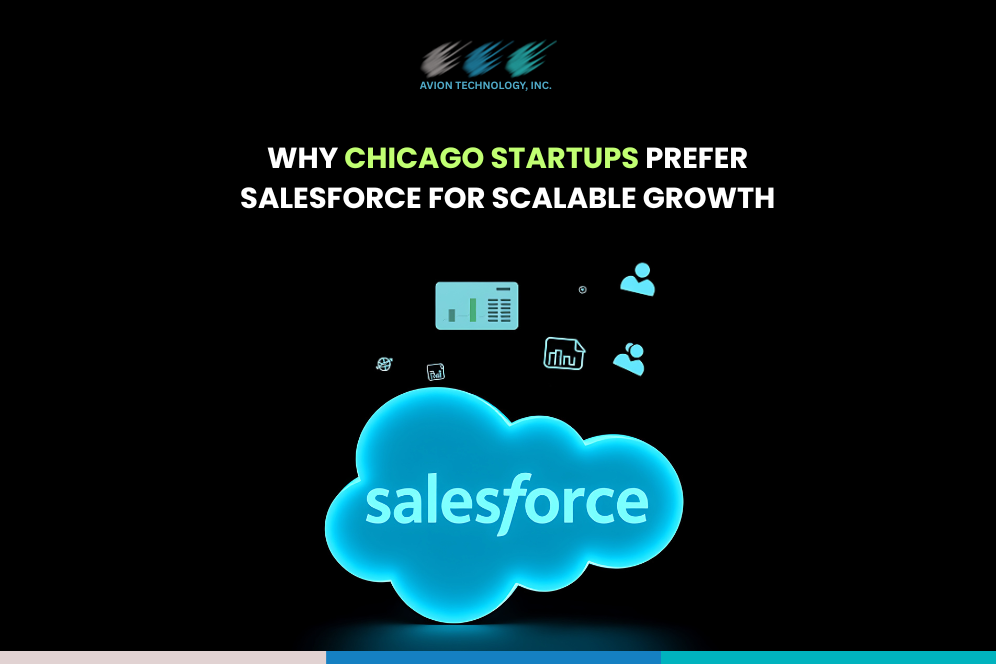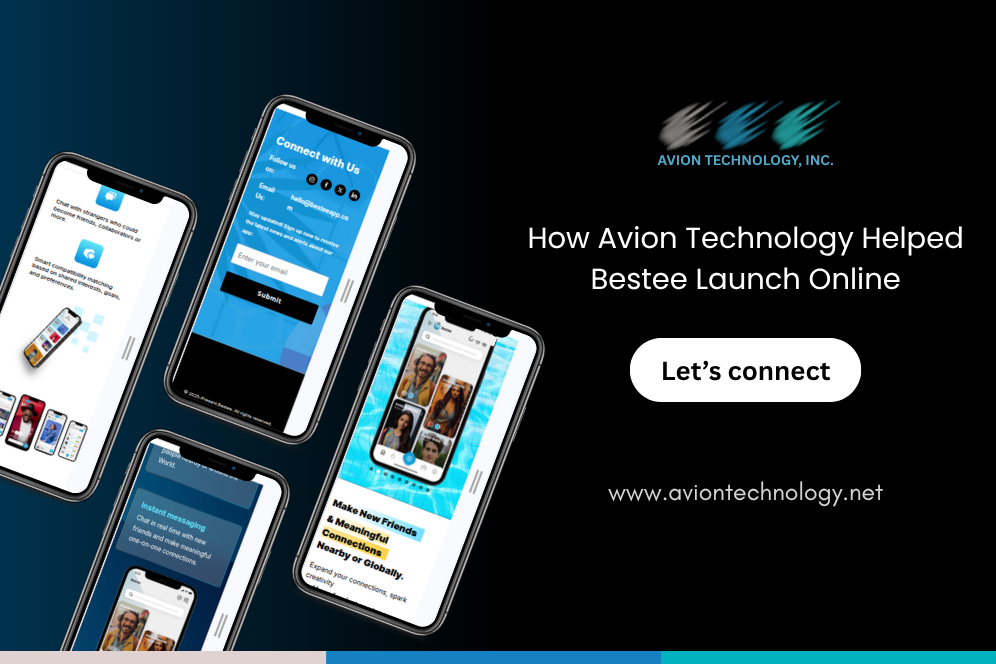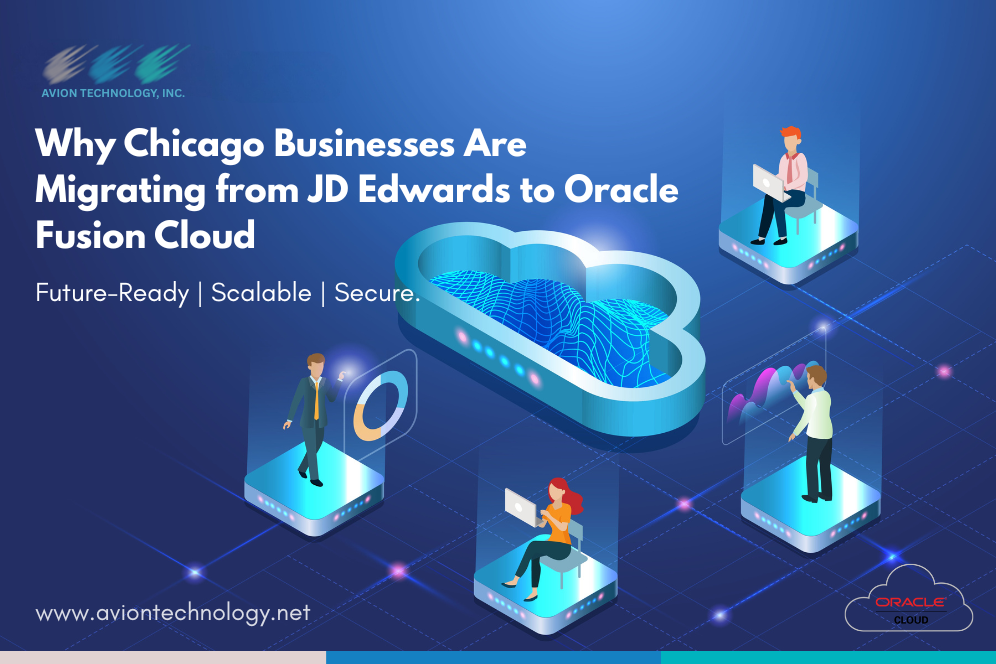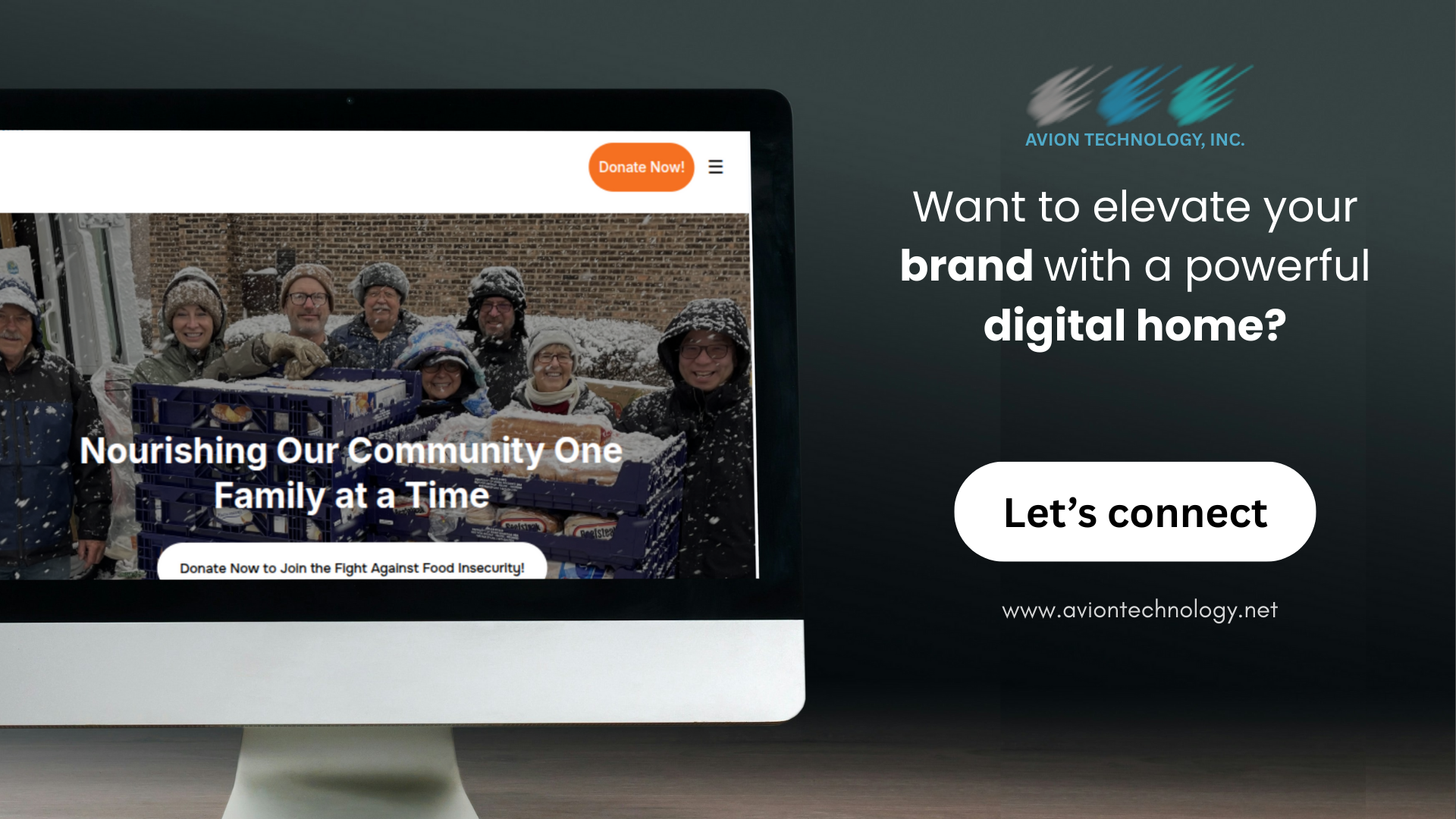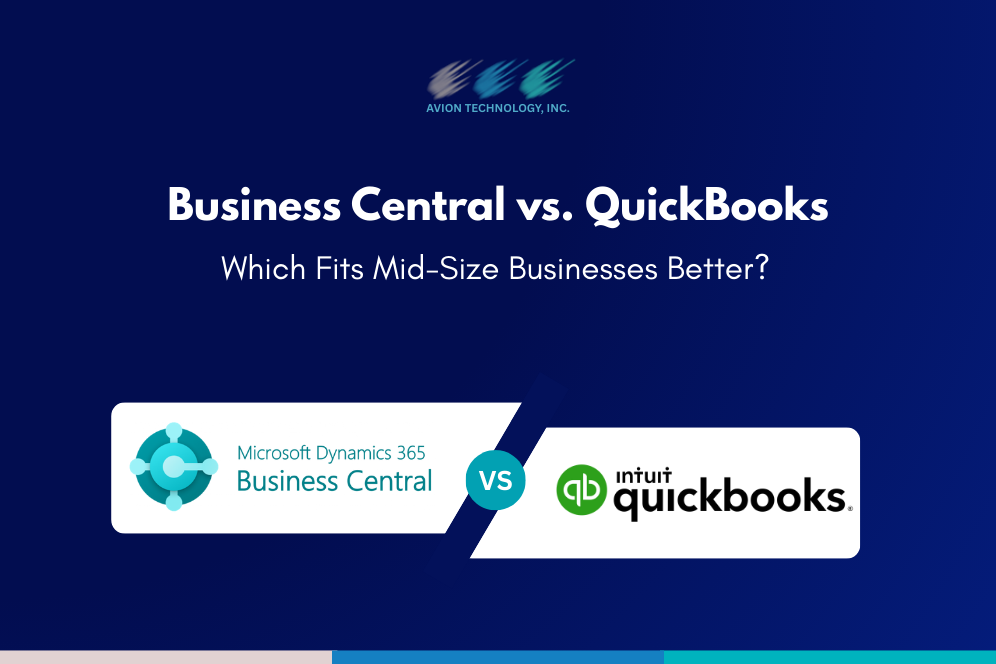ERP Implementations systems are powerful engines for business transformation—but only when implemented with the end-user in mind. Many organizations across the USA, particularly in fast-moving markets like Chicago, invest heavily in ERP technology but overlook a critical component: User Experience (UX).
A poorly designed ERP interface frustrates employees, reduces adoption, and ultimately slows down ROI. Based on insights and implementation practices from Avion Technology, here are the most common UX mistakes—and how to avoid them.
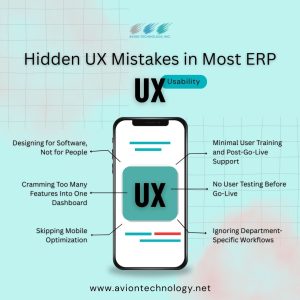
1. Designing for Software, Not for People
- ERP systems are often designed from a technical or executive perspective, rather than based on how users actually work.
- This disconnect leads to poor usability, low adoption, and excessive support requests.
- Avion Technology’s custom ERP solutions are built around the end-user—through requirement gathering, persona development, and agile iterations—ensuring that business logic meets human logic.
2. Cramming Too Many Features Into One Dashboard
- ERP platforms often try to do everything at once, overwhelming users with excessive tools and irrelevant screens.
- Especially in Chicago-based companies with distributed teams, this leads to bottlenecks in navigation and data entry.
- Avion Technology simplifies ERP UI/UX by customizing interfaces, streamlining navigation, and minimizing friction—helping users accomplish tasks in fewer clicks.
3. Skipping Mobile Optimization
- Modern teams need access on-the-go. Yet many ERP systems still fail to offer mobile-friendly interfaces.
- This is a huge loss for sectors like logistics, healthcare, or service management across the USA, where mobility is essential.
- Avion builds responsive, mobile-first ERP experiences so users can track inventory, approve workflows, or pull reports—right from their phone.
4. Minimal User Training and Post-Go-Live Support
- Many companies stop user engagement once the system is live. But successful ERP rollouts need ongoing adoption strategies.
- For growing teams in places like Chicago, changes in workforce and processes demand continual education.
- Avion supports long-term ERP success through tailored user training, on-demand guides, and process-based documentation that evolve with your business.
5. No User Testing Before Go-Live
- Skipping real-world usability testing leads to costly rework, low satisfaction, and employee pushback.
- Avion conducts thorough user testing cycles during ERP implementation, incorporating feedback from various departments to ensure seamless usability from day one.
6. Ignoring Department-Specific Workflows
- Not every team needs the same dashboard or module layout.
- Without role-based customization, ERP systems become cluttered and inefficient.
- Avion specializes in modular ERP systems that adapt to the unique workflows of sales, finance, HR, and operations—empowering each department to work smarter.
Conclusion
In today’s digital-first economy, an ERP system isn’t just a backend tool—it’s a daily workspace. If that workspace frustrates your team, you’re losing time, money, and morale. Businesses in Chicago and across the USA can no longer afford clunky ERP systems that hinder more than they help.
Avion Technology helps you implement ERP systems with usability at the core—from intuitive design to real-time mobile access and personalized dashboards. Because when your team enjoys using the system, your business enjoys better results.
Ready to fix the friction in your ERP system?
Partner with Avion Technology for user-first ERP implementation that turns your investment into real productivity.
FAQs on ERP Implementations
1. Why do most ERP implementations fail?
Poor user experience and lack of employee adoption are top reasons ERP projects fall short, even if the system itself is robust.
2. How can I improve ERP UX for my team?
Prioritize real user workflows, conduct UX testing, simplify interfaces, and provide continuous training. Partnering with an expert ERP provider like Avion Technology ensures all of this is baked into your implementation.
3. Is mobile ERP necessary for companies in the USA?
Absolutely. With hybrid work models and on-site operations, mobile-first ERP systems are essential—especially for businesses across major hubs like Chicago.
4. How long does it take to implement a user-focused ERP?
Implementation varies by complexity, but with agile methods and the right partner, companies can go live in 3–9 months with strong user adoption from day one.
5. Can ERP systems be customized by user roles?
Yes. Avion Technology specializes in role-based dashboards and department-specific modules to ensure users see exactly what they need—and nothing they don’t.
Ready to make ERP your competitive advantage?
Talk to the experts at Avion Technology and discover how a user-first ERP solution can transform your business operations—faster, smarter, and more intuitively.


